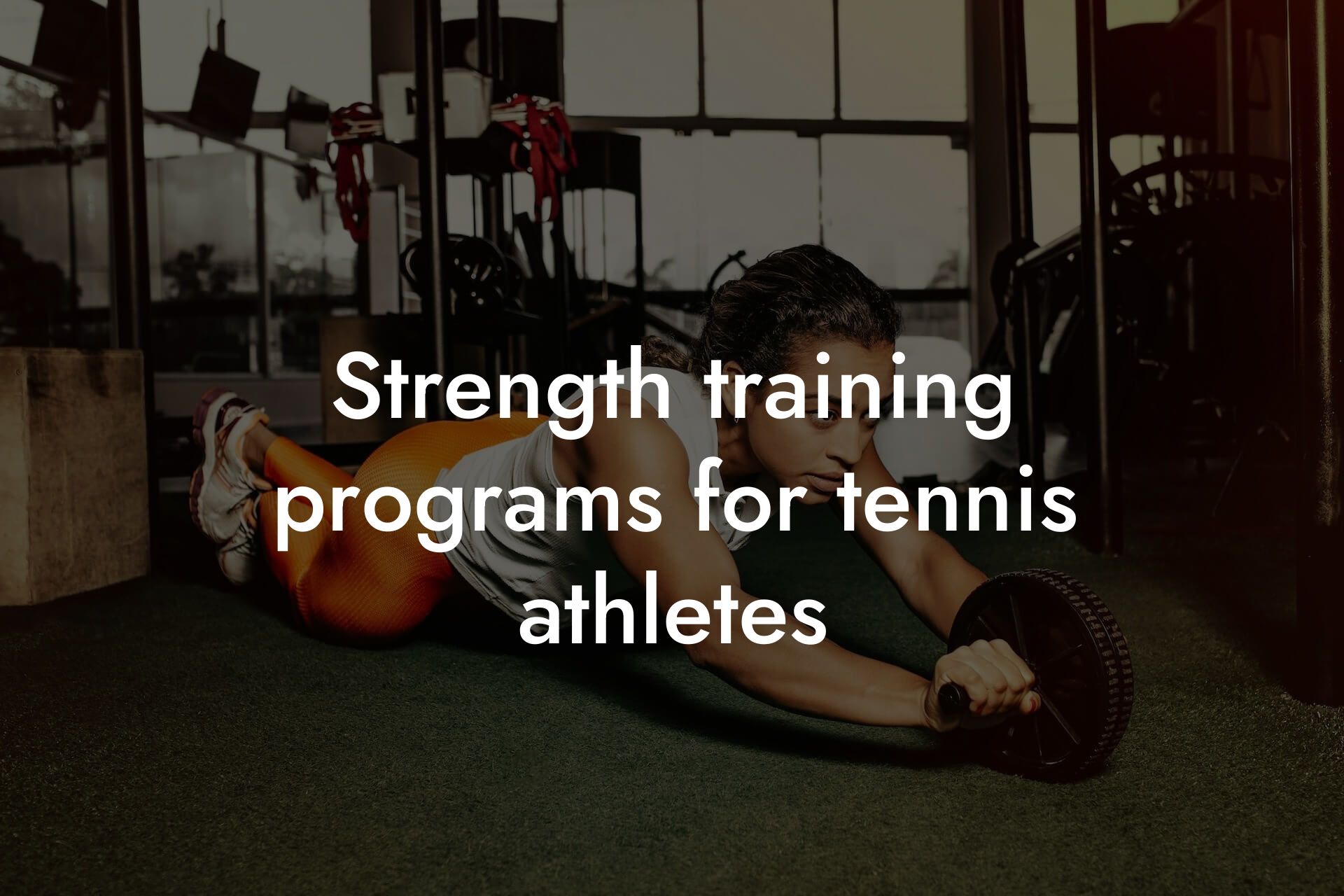As a high-earning professional, you understand the importance of maintaining a healthy and fit physique to stay on top of your game. However, with the increasing use of technology in our daily lives, it's easy to overlook the risks of tech-related injuries. Prolonged screen time, poor posture, and repetitive strain can lead to a range of health issues, from carpal tunnel syndrome to chronic back pain. Fortunately, incorporating fitness into your daily routine can help prevent these injuries and improve your overall well-being.
Table of Contents
- Understanding Tech-Related Injuries
- The Importance of Fitness in Injury Prevention
- Exercise Routines for Tech-Related Injury Prevention
- Strengthening Your Core and Back
- Incorporating Stretching and Foam Rolling
- Creating a Balanced Fitness Routine
- Monitoring Your Progress with DEXA Scans
- Frequently Asked Questions
Understanding Tech-Related Injuries
Tech-related injuries are a growing concern, especially among professionals who spend extended periods in front of screens. Some common tech-related injuries include:
- Carpal tunnel syndrome: a condition that affects the wrists and hands, causing numbness, tingling, and pain.
- Tendonitis: inflammation of the tendons, which can cause pain and stiffness in the hands, wrists, and elbows.
- Back pain: poor posture and prolonged sitting can lead to strain on the back muscles, resulting in chronic pain and discomfort.
- Eye strain: prolonged screen time can cause eye fatigue, dryness, and irritation.
The Importance of Fitness in Injury Prevention
Fitness plays a crucial role in preventing tech-related injuries. Regular exercise can help:
- Improve posture: strengthening the core and back muscles can help maintain good posture, reducing the risk of back pain and strain.
- Increase flexibility: regular stretching and exercise can improve flexibility, reducing the risk of tendonitis and carpal tunnel syndrome.
- Enhance muscle strength: building muscle strength can help reduce the risk of injury, as stronger muscles can better support the joints and tendons.
- Improve circulation: regular exercise can improve blood flow, reducing the risk of eye strain and fatigue.
Exercise Routines for Tech-Related Injury Prevention
Incorporating exercises that target the hands, wrists, and back can help prevent tech-related injuries. Some exercises to include in your routine are:
- Wrist extensions: hold a light weight in each hand and lift your wrists up and down.
- Finger bends: place a small weight on a flat surface and bend your fingers down toward your palm, then straighten them again.
- Shoulder rolls: roll your shoulders forward and backward in a circular motion.
- Chest stretches: stand in a doorway with your hands on the doorframe at shoulder height, and lean forward until you feel a stretch in your chest.
Strengthening Your Core and Back
A strong core and back are essential for maintaining good posture and reducing the risk of back pain. Some exercises to include in your routine are:
- Planks: hold a plank position for 30-60 seconds, rest for 30 seconds, and repeat for 3-5 sets.
- Lat pulldowns: use a resistance band or lat pulldown machine to target your latissimus dorsi muscles.
- Superman: lie on your stomach with your arms extended in front of you, and lift your arms, shoulders, and legs off the ground, holding for 3-5 seconds.
Incorporating Stretching and Foam Rolling
Stretching and foam rolling can help improve flexibility and reduce muscle tension. Some stretches to include in your routine are:
- Neck stretches: gently tilt your head to the side, bringing your ear towards your shoulder, and hold for 30 seconds.
- Shoulder stretches: hold your arm straight out to the side, and use your other hand to pull your hand toward your shoulder blade, holding for 30 seconds.
- Foam rolling: use a foam roller to roll out your back, shoulders, and legs, focusing on areas of tension and holding for 30 seconds.
Creating a Balanced Fitness Routine
A balanced fitness routine should include a combination of cardio, strength training, and flexibility exercises. Aim to include:
- 150 minutes of moderate-intensity cardio per week
- 2-3 strength training sessions per week, targeting all major muscle groups
- 2-3 flexibility sessions per week, focusing on stretching and foam rolling
Monitoring Your Progress with DEXA Scans
As a high-earning professional, you understand the importance of tracking your progress and making data-driven decisions. DEXA scans can provide valuable insights into your body composition, bone density, and muscle mass, helping you optimize your fitness routine and prevent tech-related injuries.
At Tano Performance Group, we offer comprehensive DEXA scans and body assessments to help you achieve your fitness goals and prevent tech-related injuries. Our team of experts will work with you to create a personalized fitness plan, tailored to your specific needs and goals.
Tech-related injuries are a growing concern, but with the right fitness routine and strategies, you can prevent these injuries and maintain a healthy and fit physique. Remember to incorporate exercises that target the hands, wrists, and back, strengthen your core and back, and include stretching and foam rolling in your routine. By monitoring your progress with DEXA scans and making data-driven decisions, you can take your fitness to the next level and stay on top of your game.
Frequently Asked Questions
What are tech-related injuries?
Tech-related injuries refer to musculoskeletal disorders and other health issues that arise from prolonged use of computers, smartphones, and other digital devices. These injuries can affect the neck, back, shoulders, wrists, and hands, and can be caused by poor posture, repetitive strain, and inadequate ergonomics.
Why are tech-related injuries a concern for high-earning professionals?
High-earning professionals often spend long hours working on computers and other digital devices, which increases their risk of developing tech-related injuries. These injuries can lead to chronic pain, decreased productivity, and reduced quality of life, ultimately affecting their career performance and overall well-being.
How can fitness help prevent tech-related injuries?
Regular exercise and physical activity can help improve posture, increase strength and flexibility, and reduce muscle tension, all of which can help prevent tech-related injuries. Fitness can also improve overall health and well-being, reducing the risk of chronic diseases and improving mental health.
What are some common tech-related injuries that can be prevented through fitness?
Some common tech-related injuries that can be prevented through fitness include carpal tunnel syndrome, tendonitis, neck and back strain, and repetitive strain injuries. Regular exercise can also help reduce the risk of developing conditions such as sciatica, thoracic outlet syndrome, and cubital tunnel syndrome.
What types of exercises are most effective in preventing tech-related injuries?
Exercises that focus on strengthening the core, improving posture, and increasing flexibility are most effective in preventing tech-related injuries. These can include exercises such as planks, shoulder rolls, wrist extensions, and neck stretches, as well as activities like yoga, Pilates, and swimming.
How often should I exercise to prevent tech-related injuries?
Aim to exercise at least 2-3 times per week, with a focus on exercises that target the neck, back, shoulders, and hands. It's also important to take regular breaks throughout the day to stretch and move around, even if it's just for a few minutes.
What are some exercises I can do at my desk to prevent tech-related injuries?
There are many exercises you can do at your desk to help prevent tech-related injuries. These can include wrist extensions, finger spreads, shoulder rolls, and neck stretches. You can also try taking breaks to stand up, stretch, and move around every 30-60 minutes.
How can I improve my posture to reduce the risk of tech-related injuries?
Improving your posture involves maintaining a neutral spine, keeping your shoulders relaxed, and positioning your computer and chair at a comfortable height. You can also try exercises such as shoulder blade squeezes and chest opens to improve your posture.
What are some ergonomic tips to reduce the risk of tech-related injuries?
Some ergonomic tips to reduce the risk of tech-related injuries include positioning your computer directly in front of you, keeping your keyboard and mouse close to your body, and using a document holder to reduce neck strain. You can also try using an ergonomic chair and adjusting the height and angle of your monitor.
How can I reduce eye strain when working on a computer?
To reduce eye strain when working on a computer, follow the 20-20-20 rule: every 20 minutes, look away from your screen and focus on something 20 feet away for 20 seconds. You can also try adjusting the brightness and contrast of your screen, and taking regular breaks to rest your eyes.
What are some signs that I may be at risk of developing a tech-related injury?
Some signs that you may be at risk of developing a tech-related injury include experiencing pain or discomfort in your neck, back, shoulders, or hands, feeling fatigued or tired, or noticing a decrease in your productivity or performance.
How can I prevent tech-related injuries when working from home?
To prevent tech-related injuries when working from home, create a dedicated workspace with a comfortable chair, adequate lighting, and a well-positioned computer and keyboard. Take regular breaks to stretch and move around, and prioritize self-care and exercise.
What are some stretches I can do to reduce muscle tension and prevent tech-related injuries?
Some stretches you can do to reduce muscle tension and prevent tech-related injuries include neck stretches, shoulder rolls, wrist extensions, and finger spreads. You can also try stretching your back, hips, and legs to reduce muscle tension and improve overall flexibility.
How can I incorporate fitness into my busy schedule?
To incorporate fitness into your busy schedule, start small and aim to do at least 10-15 minutes of exercise per day. You can also try breaking up your exercise routine into shorter sessions throughout the day, or finding activities that you enjoy and can fit into your daily routine.
What are some fitness apps and resources that can help me prevent tech-related injuries?
There are many fitness apps and resources available that can help you prevent tech-related injuries. These can include apps that provide exercise routines and stretches, as well as resources that offer ergonomic tips and advice on reducing muscle tension.
How can I track my progress and stay motivated to prevent tech-related injuries?
To track your progress and stay motivated to prevent tech-related injuries, set specific goals and track your progress over time. You can also try finding a workout buddy or accountability partner, or rewarding yourself for reaching certain milestones.
What are some common myths about tech-related injuries and fitness?
Some common myths about tech-related injuries and fitness include the idea that exercise is only for young people, or that you need to be a certain age or fitness level to start exercising. Another myth is that tech-related injuries are inevitable and can't be prevented.
How can I get started with a fitness routine to prevent tech-related injuries?
To get started with a fitness routine to prevent tech-related injuries, start by setting specific goals and identifying exercises that target the areas of your body most at risk. You can also try consulting with a fitness professional or healthcare expert to create a personalized exercise routine.
What are some additional resources I can use to learn more about preventing tech-related injuries through fitness?
Some additional resources you can use to learn more about preventing tech-related injuries through fitness include fitness apps, online exercise routines, and healthcare websites. You can also try consulting with a fitness professional or healthcare expert, or attending workshops or seminars on ergonomics and injury prevention.
How can I make fitness a habit and prioritize my health and well-being?
To make fitness a habit and prioritize your health and well-being, start by setting specific goals and creating a schedule that works for you. You can also try finding activities that you enjoy, tracking your progress, and rewarding yourself for reaching certain milestones.
Zak Faulkner
Zak Faulkner is a leading authority in the realm of physical health and body composition analysis, with over 15 years of experience helping professionals optimise their fitness and well-being. As one the experts behind Tano Performance Group, Zak has dedicated his career to providing in-depth, science-backed insights that empower clients to elevate their physical performance and overall health.
With extensive knowledge of DEXA technology, Zak specializes in delivering comprehensive body assessments that offer precise data on body fat, muscle mass, bone density, and overall physique. His expertise enables individuals to make informed decisions and achieve their fitness goals with accuracy and confidence. Zak’s approach is rooted in a deep understanding of human physiology, combined with a passion for helping clients unlock their full potential through personalised strategies.
Over the years, Zak has earned a reputation for his commitment to excellence, precision, and client-focused service. His guidance is trusted by top professionals who demand the best when it comes to their health. Whether advising on fitness programs, nutritional strategies, or long-term wellness plans, Zak Faulkner’s insights are a valuable resource for anyone serious about taking their health and fitness to the next level.
At Tano Performance Group, Zak continues to lead our Content Team revolutionising how professionals approach their physical health, offering unparalleled expertise that drives real results.




